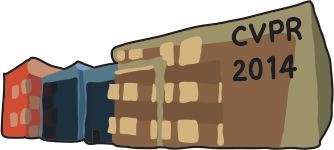-
The Sightfield: Visualizing Computer Vision, and Seeing Its Capacity to "See"
AbstractComputer vision is embedded in toilets, urinals, hand-wash faucets (e.g. Delta Faucet's 128 or 1024 pixel linear arrays), doors, lightswitches, thermostats, and many other objects that "watch" us. Camera-based motion sensing streetlights are installed throughout entire cities, making embedded vision ubiquitous. Technological advancement is leading to increased sensory and computational performance combined with miniaturization that is making vision sensors less visible. In that sense, computer vision is "seeing" better while it is becoming harder for us to see it. I will introduce and describe the concept of a "sight-field", a time-reversed lightfield that can be visualized with time-exposure photography, to make vision (i.e. the capacity to see) visible. In particular, I will describe a special wand that changes color when it is being observed. The wand has an array of light sources that each change color when being watched. The intensity of each light source increases in proportion to the degree to which it is observed. The wand is a surveillometer/sousveillometer array sensing, measuring, and making visible sur/sousveillance. Moving the wand through space, while tracking its exact 3D position in space, makes visible the otherwise invisible "rays of sight" that emenate from cameras. This capacity to sense, measure, and visualize vision, is useful in liability, insurance, safety, and risk assessment, as well as privacy//priveillance assessment, criminology, urban planning, design, and (sur/sous)veillance studies.
Related Material
[pdf][bibtex]@InProceedings{Mann_2014_CVPR_Workshops,
author = {Mann, Steve},
title = {The Sightfield: Visualizing Computer Vision, and Seeing Its Capacity to "See"},
booktitle = {Proceedings of the IEEE Conference on Computer Vision and Pattern Recognition (CVPR) Workshops},
month = {June},
year = {2014}
}
These CVPR 2014 workshop papers are the Open Access versions, provided by the Computer Vision Foundation.
Except for the watermark, they are identical to the accepted versions; the final published version of the proceedings is available on IEEE Xplore.
Except for the watermark, they are identical to the accepted versions; the final published version of the proceedings is available on IEEE Xplore.
This material is presented to ensure timely dissemination of scholarly and technical work.
Copyright and all rights therein are retained by authors or by other copyright holders.
All persons copying this information are expected to adhere to the terms and constraints invoked by each author's copyright.

